I was having fun with Mozzi, an audio synthesis library (https://sensorium.github.io/Mozzi/), when I realized I will have to build a controller to really use it at his full potential.
What if I could just plug a keyboard or a Midi controller? That would be so much easier... What?! I didn't know that it was possible!
Choose Your USB HostThanks to Circuit@Home device we can do that.
EDIT: Circuitathome website as been replaced so here is the original link from internet archive.
https://web.archive.org/web/20190120133645/https://www.circuitsathome.com/usb-host-shield-hardware-manual/
In this tutorial we will use an USB Host Mini (clone version), the chip on it (MAX3421E) will only works at 3.3V.
If you want to use a 5V microcontroller (like the Arduino Uno / Nano) use the USB Host Shield instead.
Before we plug our USB host to our microcontroller, we will have to fix some issues or it won't work.
Fix Powering IssuesIf you buy a clone of the USB Host Mini, there is no jumper for VBUS.This means your USB devices will be powered with 3.3v, which didn't works with any of my devices who all require 5V.
You can find more details here: https://ht-deko.com/arduino/shield_usbhost_mini.html (in japanese)
You will have to cut this trace, to fix this.I used a small screw driver to do this, but you probably should use a small cutter instead.
OK, I hope you didn't break your board! Now it is time to plug it!
I used a Wemos Mini D1 with my USB Host Mini device, here is how to plug it.
- D3 -- SS
- D7 -- MISO
- D6 -- MOSI
- D5 -- SCK
- RST -- RST
You may have notice SS (Chip Select/CS) is plugged on D3 instead of D8.
I run into an issue where the USB Host set my Wemos Mini in firmware flashing mode, which stop the sketch from running.https://github.com/felis/USB_Host_Shield_2.0/issues/457
In order to change the SS pin, we need to change a line in the library.
Download USB Host Shield Library 2.0
Open UsbCore.h in libraries/USB_Host_Shield_Library_2.0 and change this line
#elif defined(ESP8266)typedef MAX3421e<P15, P5> MAX3421E; // ESP8266 boardsWith this line
#elif defined(ESP8266)typedef MAX3421e<P0, P5> MAX3421E; // ESP8266 boardsNotice we used P0 instead of D3, it is because GPIO0 is D3 on the Wemos Mini.https://escapequotes.net/esp8266-wemos-d1-mini-pins-and-diagram/
Downgrade ESP8266OK, we are almost done, if you try to compile an example from the library, it will not works.
Note : This was recently fix, so this step is only required if your version of USB Host Shield Library 2.0 is 1.3.2 or lower.
It is because the library is not compatible with Arduino ESP8266 2.5, you need to downgrade it to 2.4.2https://github.com/felis/USB_Host_Shield_2.0/issues/449
Go to Tools / Boards / Boards Manager and change your version to 2.4.2.
There is a lot of examples in USB Host Shield Library 2.0In order to test that everything is working correctly, you should first try USB_desc.
- Upload USB_desc
- Open Serial Monitor (115200)
- Plug an USB device
- Reset your board (ESP8266)
Note: You can't hot-plug your USB device (at least in the examples), you need to reset the board each times you unplug, plug your device.
You should see a message like this:
01
--
Device descriptor:
Descriptor Length: 12
Descriptor type: 01
USB version: 0200
Device class: FF
Device Subclass: FF
Device Protocol: FF
Max.packet size: 08
Vendor ID: 045E
Product ID: 028E
Revision ID: 0114
Mfg.string index: 01
Prod.string index: 02
Serial number index: 03
Number of conf.: 01
Configuration descriptor:
Total length: 0099
Num.intf: 04
Conf.value: 01
Conf.string: 00
Attr.: A0
Max.pwr: FA
Interface descriptor:
Intf.number: 00
Alt.: 00
Endpoints: 02
Intf. Class: FF
Intf. Subclass: 5D
Intf. Protocol: 01
Intf.string: 00
Unknown descriptor:
Length: 11
Type: 21
Contents: 0001012581140000000013010800000705
Endpoint descriptor:
Endpoint address: 81
Attr.: 03
Max.pkt size: 0020
Polling interval: 04
Endpoint descriptor:
Endpoint address: 01
Attr.: 03
Max.pkt size: 0020
Polling interval: 08
Interface descriptor:
Intf.number: 01
Alt.: 00
Endpoints: 04
Intf. Class: FF
Intf. Subclass: 5D
Intf. Protocol: 03
Intf.string: 00
Unknown descriptor:
Length: 1B
Type: 21
Contents: 000101018240010220168300000000000016030000000000000705
Endpoint descriptor:
Endpoint address: 82
Attr.: 03
Max.pkt size: 0020
Polling interval: 02
Endpoint descriptor:
Endpoint address: 02
Attr.: 03
Max.pkt size: 0020
Polling interval: 04
Endpoint descriptor:
Endpoint address: 83
Attr.: 03
Max.pkt size: 0020
Polling interval: 40
Endpoint descriptor:
Endpoint address: 03
Attr.: 03
Max.pkt size: 0020
Polling interval: 10
Interface descriptor:
Intf.number: 02
Alt.: 00
Endpoints: 01
Intf. Class: FF
Intf. Subclass: 5D
Intf. Protocol: 02
Intf.string: 00
Unknown descriptor:
Length: 09
Type: 21
Contents: 000101228407000705
Endpoint descriptor:
Endpoint address: 84
Attr.: 03
Max.pkt size: 0020
Polling interval: 10
Interface descriptor:
Intf.number: 03
Alt.: 00
Endpoints: 00
Intf. Class: FF
Intf. Subclass: FD
Intf. Protocol: 13
Intf.string: 04
Unknown descriptor:
Length: 06
Type: 41
Contents: 000101034A20
Addr:1(0.0.1)If you have an XBOX360 for PC, use the example XBOX/XBOXUSB
- L2/R2 vibrates when you press it.
- L2/R2 : 0/255
- Stick (Hat) X/Y : -32768 / 32768
- Led can also be control ! (use the pad / back / start / xbox buttons to try it)
Open HID/USBHIDBootKbd example
This example detect key down/up and modifier (SHIFT/CTRL etc...)
DN >07<
ASCII: d
UP >07<I didn't manage to make my mouse works.The example is in HID/USBHIDBootMouse
Midi Controller ExampleOpen USBH_MIDI/USBH_MIDI_dump example
Most Midi devices, will only use a small part of the buffer (bufMidi)
00001679: 64: 09 90 2F 13 00 00 00 00 00 00 00 00 00 00 00 00 00 00 00 00 00 00 00 00 00 00 00 00 00 00 00 00 00 00 00 00 00 00 00 00 00 00 00 00 00 00 00 00 00 00 00 00 00 00 00 00 00 00 00 00 00 00 00 00
0000174A: 64: 08 80 2F 7F 00 00 00 00 00 00 00 00 00 00 00 00 00 00 00 00 00 00 00 00 00 00 00 00 00 00 00 00 00 00 00 00 00 00 00 00 00 00 00 00 00 00 00 00 00 00 00 00 00 00 00 00 00 00 00 00 00 00 00 00- bufMidi[0] : Note ON (9) / Note OFF (8)
- bufMidi[2] : Note
- bufMidi[3] : Velocity
Using USB devices open up a lot of possibilities for our microcontroller, we only touch the surface of all the thing we can do with this USB Host device.
- You can use a USB Hub to use multiple USB devices.
- There are a lot of pins on the USB Host, it is because there are GPIO on it! You can plug buttons / leds even an LCD screen on it!
- You can also use USB drive.




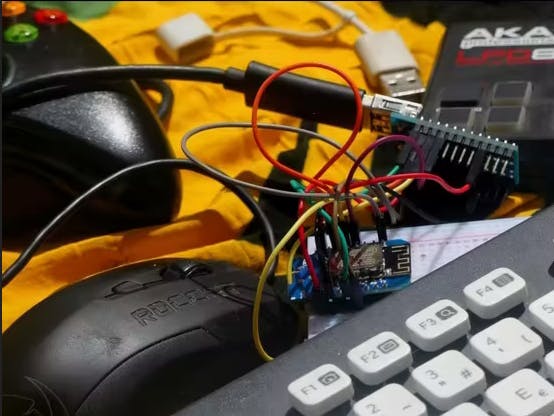


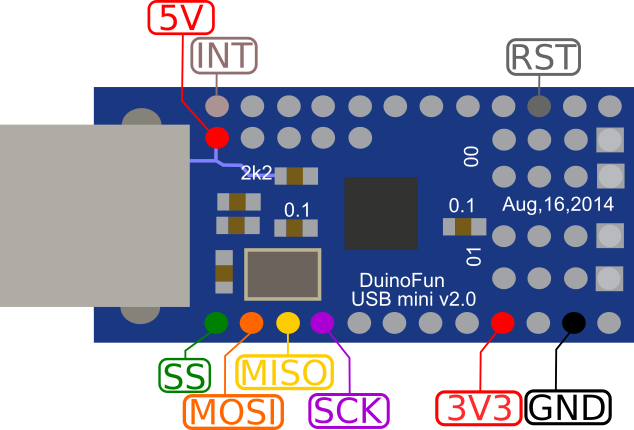
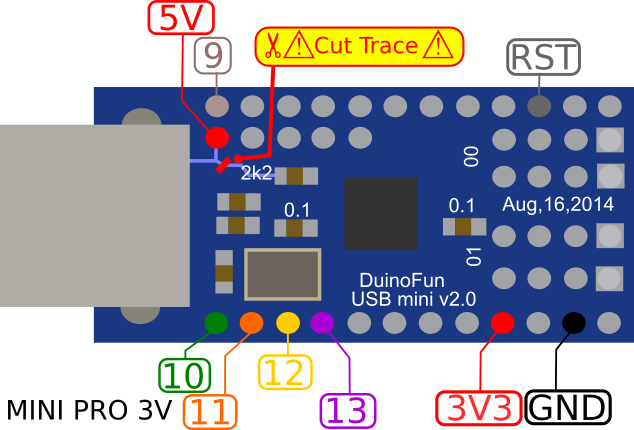
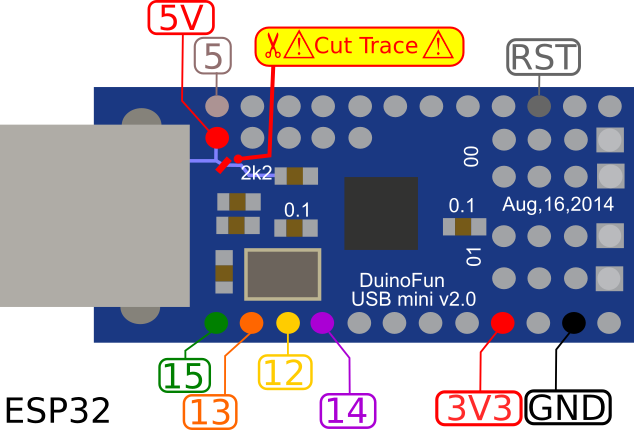
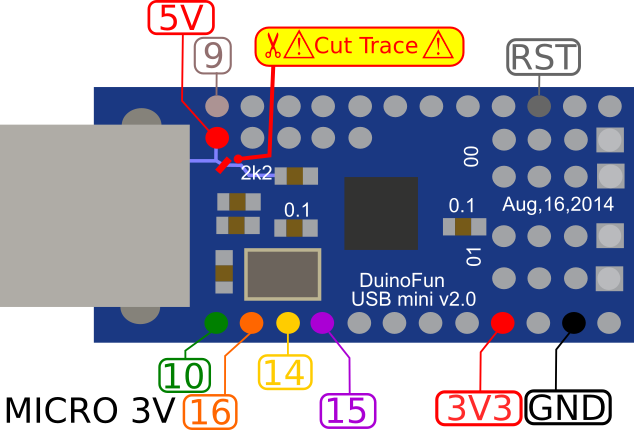
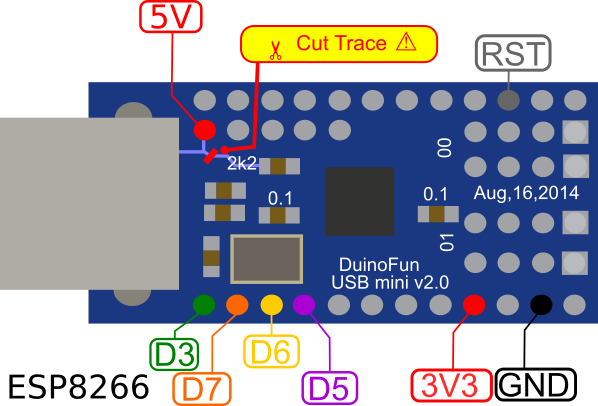

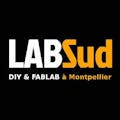



Comments
Please log in or sign up to comment.